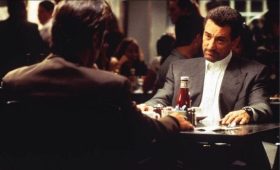Emma Summers has over 12 years’ experience as a professional artist and continues to create and exhibit nationally. She has a Masters degree from the renowned Centre for Ceramic Studies, University of Wales Institute, Cardiff (Distinction, 2002).
Emma has exhibited her work in a range of art galleries and alternative spaces, including the Ice House in Holland Park, The Custard Factory, Birmingham, St Pancras Station, London and The Triskel Art Centre, Cork. In 2004 she exhibited Anatomy of Exiles at the MAC in Birmingham – this was part of a programme inspired to highlight the plight of international refugees. She has also exhibited at the Old Truman Brewery in London. The exhibition (Every time I see the sea) was held by the charity Christian Aid to mark the first anniversary of the tsunami. Emma sees exhibiting as a vital, integral part of her continued development as an artist.
Emma has received a number of awards for her work, including the Sir Edward Heath Award and the Arts Council Visual Arts Award. She has also been featured in Ceramic Review (Jan./Feb. 2006 and Sep./Oct. 2004). Her exhibition for Christian Aid was featured in the Times and was titled Return to the beaches of the lost shoes.
Exhibitions in 2007 include Artsfest in Birmingham in September and Children in Conflict, in association with Christian Aid, at Wolverhampton Art Gallery.
Emma is currently Artist-in-Residence at Hereford Art College.
What would be a typical day for you?
I don’t really have a typical day as such. Being a self-employed artist is pretty varied and work can change considerably from day to day. However, I do spend a good part of my week on the internet or on e-mail either answering enquiries, chasing up leads for work or dealing with ongoing projects. Work can vary from organising an exhibition to running a workshop or visiting a gallery. I try to spend three days of the week in the ceramic studio, exploring new ideas or finishing off work for commission but this can vary, depending on what else I have going on at the time.
What are you doing today?
I’ve been writing a proposed feature article for a specialist UK ceramic magazine called Ceramic Review. I’m also currently putting together a new funding proposal for the Arts Council. Having recently returned from a research residency in New Delhi, I’m looking for development money to take the research to the next stage and am hoping to get some funding for an exhibition in 2008.
What’s the best thing about your work?
Variety, and not being in an office 24-7. Also, being my own boss and making interesting work. Over the past few years I’ve also managed to do a fair bit of travelling. I was commissioned by the international charity Christian Aid to make ceramic work for a London exhibition to mark the first anniversary of the tsunami. I travelled with a journalist to Tamil Nadu in South India to undertake research for the work, and visited the worst affected areas, seeing first hand the impact of local charities helping to rebuild communities. These sorts of projects keep my work interesting and varied.
And the worst thing?
Insecurity of work. Never knowing how much work I will have in a given month.
How did you get into it?
I did a BA Hons. in Ceramics at Wolverhampton University and then went on to do a Masters at UWIC. Since then I’ve exhibited regularly in the UK and have been supported through various projects by the Arts Council of England.
What do you think makes you good at what you do?
Having a slightly stubborn and determined attitude and character. Also, in my profession, it’s important to have the ability to think ‘outside the box’, to come up with creative ideas to generate work and not just wait for advertised jobs or things to land in your lap.
You were involved in an arts project with the Red Cross recently. Could you tell us a bit more about it?
I was commissioned by the British Red Cross to co-ordinate and curate a humanitarian arts exhibition. We worked within four schools to create artwork for an exhibition to mark the opening of a new Red Cross building in Worcester. We did a series of presentations and workshops in the schools and students created a variety of artwork including glass, ceramics, textiles and print on a humanitarian theme. The work is currently on display at the Worcester Red Cross headquarters.
What’s been your greatest achievement in your career so far?
I lived in Thailand for a year and while there I met a refugee child from Burma, he was a Shan and died at two years old. In response to my experience with him I came back to the UK, undertook an MA and spent two years creating a body of ceramic installation work about him. This month, the work is being shown in a national exhibition as part of the Children in Conflict exhibition at Wolverhampton Gallery (in partnership with the charity Christian Aid). It’s open until February and will then tour the UK.
What challenges do you expect to face in the coming year?
With the changing funding policy for Arts Council applications and the increasing closures of ceramics specialist courses around the UK, it’s becoming increasingly difficult for artists working in the field of ceramics. The challenge is always how will I find new work, it’s the nature of the profession. I just explore as many avenues as I can; it’s also really important to keep exhibiting and creating new audiences for your work.
If you could have a complete career change and do something else, what would you choose, and why?
I suppose it could be quite interesting to do something like River Cottage! Having lived in the city most of my life I quite fancy an alternative life in the country!




